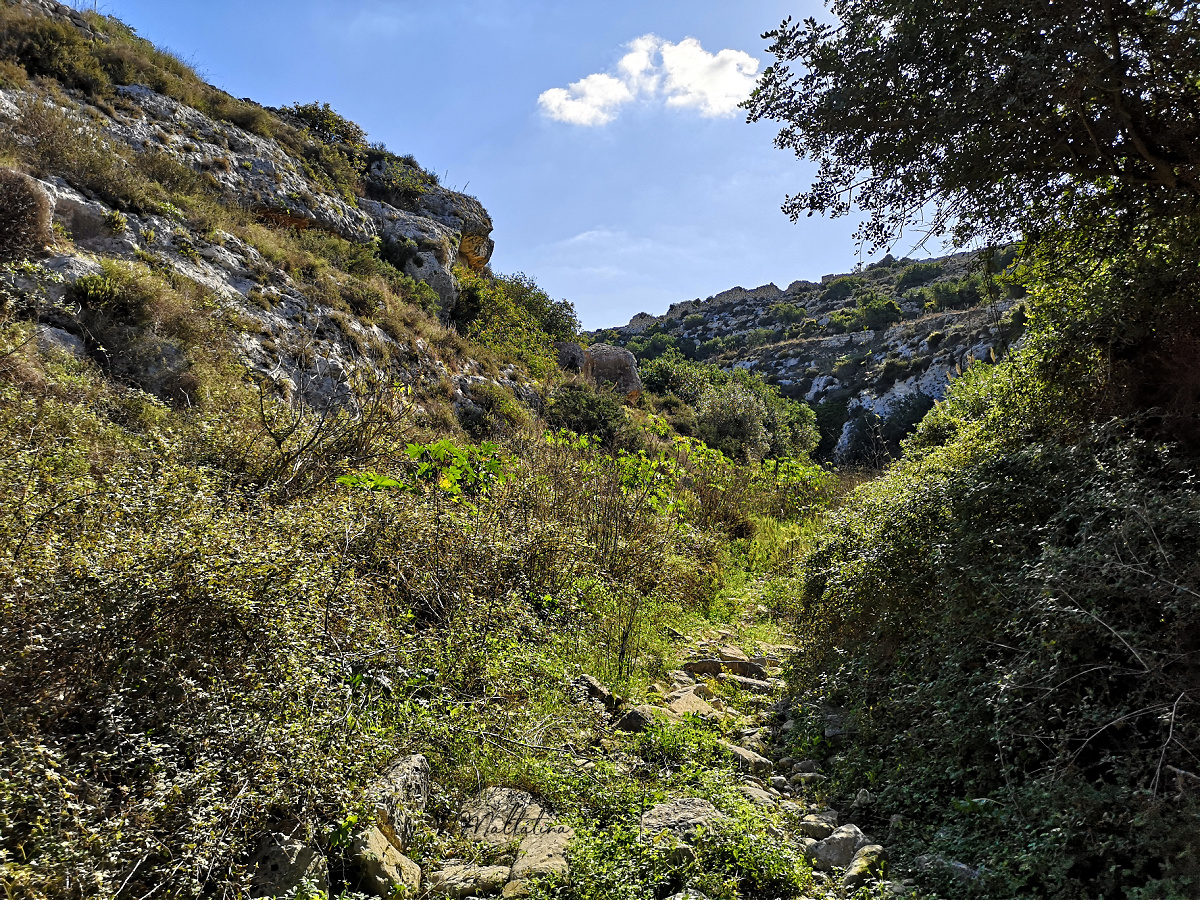Clapham Junction Curt Ruts & Ghar il-Kbir Cave Complex
Malta is full of mystery. There are so many things that you will puzzle over and this is one of them. This time I would like to take you to explore the Clapham Junction area, also known at Ghar il-Kbir. It can be found right between the Dingli Cliffs and the Buskett Gardens.
What is so interesting to see in this place you may ask. Well it is considered to have the most extensive set of ruts on the Maltese Islands. Plus there is a large cave complex nearby which was still inhabited till 1835.
If you like unsolved mysteries the cart ruts will definitely catch your attention. Let’s start exploring, shall we?

The enigmatic cart ruts are Malta’s mysterious remains from the prehistoric times. Although many theories have been suggested for their creation and use, it is still a subject which can be highly debated. How and why they were formed/created? By who? For which reason? There are many unanswered questions surrounding this site.
Cart ruts similar to these can be found all over Malta and Gozo. Let’s just mention the ruts that you can see as part of Xemxija Heritage Trial.

What do we actually know about these ruts? These tracks differ in their forms. Some are rather flat and wide while others are deep and narrow. They are generally about 60cm deep and between 110 to 140cm apart. The exact purpose why and how these ruts were made is not known. However there seem to be a general agreement that these were used for transport related purposes.
A large number of these ruts seem to be located close to old quarries, which may suggest that these ruts were used to transport stones to building sites. Clapham Junction cart ruts are actually located in a very close proximity to Ta’ Zuta Quarry.
How were these ruts created? There are several suggestions of how this complex network of tracks (carved) in the rock was created. Some say that these ruts were caused by wooden-wheeled carts eroding soft limestone.
Why are the cart ruts referred to as Clapham Junction? It is reported that the “Clapham Junction” nickname was given by an Englishman, who later reported that it reminded him of the busy railway station Clapham Junction in London.

After exploring the Clapham Junction cart ruts start looking for the well hidden Misrah Ghar il-Kbir – a large cave complex. It has been documented since the 15th century and inhabited till 1835.
In the 17th century the community was visited by Athanasius Kircher, who actually left a description of his visit. He wrote that those people were healthy, they did not eat meat, they produced cheese and had a well-organised system. This community attracted a lot of interest of various visitors to Malta. Apparently even the Grand Masters usually suggested that their visitors should pay a visit to this location.
In 1835, the British authorities relocated the last inhabitants for health reasons to nearby Siggiewi.

Misrah Għar il-Kbir is one of the best known sites of medieval cave houses in Malta. Għar il-Kbir is not just a single cave, but actually several natural caves that were enlarged by the inhabitants.
Misrah Għar il-Kbir is a typical example of a karst feature settlement in Upper Coralline Limestone. Formed by the dissolution of carbonate rock by rainwater which led to underwater drainage and the formation of the underground cave. Today, the cave looks like a crater-like depression in the ground, because the ceiling of the central cave collapsed.

White visiting Ghar il-Kbir we didn’t count how many caves where actually there, but I’ve read that it is a complex of eight caves in two levels. This is one of them. Some of these caves are rather small while others are enormous! We were actually very impressed with what we found.

“There are many troglodytes in Malta. They dig caves and these are their homes.” So wrote Jean Quintin d’Autun after his visit to the Maltese Islands in 1533. Indeed, a study of minor place names indicates there may have been around ninety natural or man-made caves that might have been used for domiciliary or religious-cult purposes.
Għar Dalam (Birżebbuġa), aside, Għar il-Kbir (The Great Cave) in the limits of Dingli is by far the most well-known for its use over the centuries as a place of human habitation. Although the cave was in all probability originally a natural karst solution void, no trace of such origin remains today. In fact, what can be seen of Għar il-Kbir shows it to be a complex of rock-cut (man-made) interconnecting caves. (Malta Independent, 2016).




After exploring number of caves at the ground level let’s go and see what’s hidden for us underground.


All these natural caves that were enlarged by the inhabitants are also interconnected. There is always a small passage or a window leading from one cave to another.

This is the largest cave with the highest ceiling. The picture above is from the underground level and the picture below is taken from the ground level. You can tell that it’s a big cave when compared to the size of the ‘pallet table’ located in the middle.

We had visited as a group of four this time and I can safely say that we were all pleasantly surprised with what we had found. This large complex of caves is still in a very good condition I would say. Let’s hope it will stay this way in the years to come.


None of my photo blogs would be complete without tagging the exact location on GoogleMaps. I hope you enjoyed this blog, learnt something new and give site a visit some time soon.




Such an interesting article. I had no idea these caves existed, so, sadly, I never got to explore them.